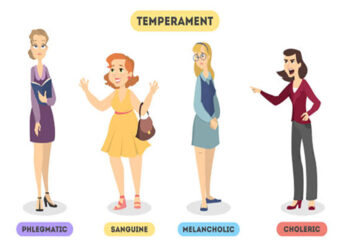When we talk about sustainability, many people only think of global warming and the like but the benefits of living sustainably are so numerous to not make anyone covet that lifestyle. And if you are looking for ways to live more sustainably in your home, here are some ways you could consider.
Every day, the average family/individual produces around four pounds of garbage which adds up to more than a ton of trash annually. This junk ends up becoming problematic to your home surroundings and the atmosphere at large. Pests and rodents can build up in their number, causing more nuisance and disease for your family.
Not only will being sustainable help you maintain a clean environment and clutter-free space, but it also helps you cut down on unnecessary expenses and save more money for your family. Thus, re-emphasizing the importance of adopting measures to reduce a family’s carbon footprint as much as possible.
For example, recycling a recyclable product instead of disposing of it will prevent you from spending more money purchasing the same thing you already had.
For whichever reasons you have decided to live more sustainably in your home now, I will show you 10 great ways you can achieve more sustainability in your home today.
1. Reduce waste generation
Not everything needs to be disposed of. Living sustainably in your home requires that you limit how much waste you and your family generate daily. While this may look unrealistic, there are many ways you can go about reducing how much waste your household generates.
Waste is leftovers of the things you buy or consume. So, the principal way to limit waste generation is to reduce purchases. Before you purchase a new gadget, equipment, food, or perfume, think about its implication for your home and environmental sustainability. Why do you think you need a fifth car in a family of three? Just be sure you are well-convinced before you purchase more items for your home.
2. Reuse old materials
As part of reducing waste generation, reusing old materials can also make your home more sustainable. It offers an opportunity to save energy and reduce waste emissions to your home and the entire environment.
Reuse is simply the act of using an item several times after the initial use. It could be for the same purpose or another within the home. For example, you could refill plastic water bottles several times, and after that, you can reuse them to store other liquids in the home.
Another example is, let’s say you are renovating a part of your home, you could turn old carpeting, usable wood plans, and metal sheets into new masterpieces in the form of a farmhouse, sheds, outdoor and indoor tables, chairs, etcetera, within your home.
When making a major renovation, you could call a residential dumpster rental to help move your household waste to other areas where it could be put to a secondary use.
3. Prioritize recycling
Disposal is supposed to be the last step in the life cycle of any product. Before disposal is considered, the item should be reused and then recycled first.
Recycling is the process of converting waste materials into new products or materials to prevent them from being disposed of as trash. It comes from the awareness that everything we produce is made from raw materials in our environment including plants, animals, and the soil.
Disposing of everything after a limited number of uses will make us fall back on our environment for more raw materials which can alter the environmental balance. This is why recycling tries to avoid this by emphasizing the need to reuse old materials as starting raw materials for new ones.
Many recycled products have been made that beat people’s imagination. And if you think recycling is not for you, think twice about it. Think of creative ways to turn old materials into new tools and materials in your home.
4. Consider composting
Composting is the act of turning your waste food into organic manure. Even when you are precise in the calculations of how much food your family consumes, there are always going to be some leftover wastes. But instead of dumping them away, you can convert them to compost.
Composting diverts organic wastes from landfills where they would otherwise be decomposed anaerobically to produce methane gas, which is a potential greenhouse gas. Methane is also flammable and can be turned into cooking fuel but many local waste development would not consider doing so. So, instead, you should consider composting to turn the wastes into nutrients for plants and symbiotic animals within your household environment.
Composting has other benefits of improving soil structure, fertility, and moisture retention, thereby promoting healthy plant growth, not forgetting the role of plants in keeping our environment clean and green.
5. Start a family garden
Starting a garden is one of the best ways to live more sustainably in your home. Not only does a clean garden enhance the aesthetics of your compound or backyard but it can also be a way to produce food and fruits for sale or consumption by your family, friends, and neighbors.
While you may decide to sell your composted organic manure to farmers, you can also put them to use in your garden. Thus, creating a sustainable balance between waste and food.
Plants purify the air by removing excess carbon dioxide and giving off more oxygen. This helps keep the air around you fresh and clean. They also help create a healthy balance between your environment and other living organisms.
The thought of always going to the food store to get vegetables can increase your stress level but farming them on your farm gives you an amazing opportunity to exercise healthfully while still producing what you need.
It also helps put available land to use before you have something else to use it for. But even if you don’t have a large garden space, growing a kitchen garden or pot garden is also a great way for you and your family to reap the sustainability benefits of gardening. A kitchen garden can be used to grow basic plants and herbs, like lettuce, oregano, rosemary, basil, and fruits.
6. Optimize your home’s energy use
Optimizing your home’s energy is one way to adopt a more sustainable lifestyle for your home. This involves getting energy-efficient appliances and minimizing carbon fuels as much as possible. Not only will this minimize overall energy consumption but also minimize overall energy costs.
This is also about being deliberate about your home’s heating and air conditioning system because some of these could be hurting the environment, leading to substantial climate changes, or causing unexpected home issues. Opt-in for energy-efficient and eco-friendly appliances, and regularly service old equipment to ensure they are still functioning optimally.
For instance, instead of relying solely on your HVAC (Heating, Ventilation, and Air conditioning) system to keep your home temperature, set the thermostat at a cooler temperature than usual in the winter or a hotter temperature in the summer while complementing the rest using additional layers of clothing or blanket for warmth during winter, and fans and natural ventilation for additional cooling in summer. This reduces the energy workload on the HVAC units.
If you are ready to take it a step ahead toward living more sustainably in your home, you could decide to get off the grid completely by inquiring about and installing solar panels to power your home and appliances. Solar energy is cleaner and more efficient than fossil fuel-operated systems.
Other ways to optimize your home’s energy include boiling only as much water as you need in kettles, and covering pans and food with a lid when cooking to reduce heat loss.
7. Turn off or unplug your unused appliances
No matter how negligible it might seem, leaving appliances plugged in when not in use can be a potential source of energy loss. Appliances emit radiation and energy when functioning. Thus, unplugging unused appliances is a way to live more sustainably in the home.
This also goes on to preserve the life span of the appliances and prevent electric sparks or accidents in the home.
8. Minimize water wastage
Water might not be the scarcest commodity on the planet but there are people who don’t have access to quality water. Whether you have a large water tank that can serve you for a whole year or not, water wastage is definitely not a sustainable way of living. Therefore, adopting measures to minimize water wastage is a way of living more sustainably in your home.
Take shorter showers or bathe from the bucket, turn off the tap when you are not using it, and fix broken pipes or leaky taps as soon as possible. Not only will these reduce your cost of pumping water or electricity consumption but will also prevent excess water clogging in parts of your home which can act as niches for disease-causing agents.
One last addition regarding water is to soften your domestic water from the source. This helps to prevent soap wastage when washing, enhancing the efficiency of the washing machine, or preventing the development of boiler scales at the bottom of your cooking pots and kettle.
9. Practice upcycling
Unlike recycling, upcycling is the process of converting waste or unwanted materials/products into newer ones with better quality or value without changing the form of the material. Recycling first involves breaking down the old product into a raw material form to create a different product entirely.
Upcycling involves a creative and innovative approach. Instead of disposing of a product, you could remodel it for further use. For example, re-sewing old clothes into new fashion items or accessories, converting glass jars or bottles into decorative items or storage containers, or turning used tires into outdoor seating or playground equipment.
Upcycling is an efficient and sustainable way to reuse materials and products in your home to reduce waste as earlier discussed and add more value to your already-owned items.
10. Donate unused belongings
If you have useful belongings that you are no longer using, you can donate them to other people who need them. This diverts them from landing in the landfill prematurely. Giving out unused items is a sustainable way of decluttering your living space because it also prevents them from going to waste.
Allowing your unused belongings to waste when someone else can benefit from them is a complete waste of value. You would have been happier if it put a smile on somebody’s face instead. This happiness can in turn build better social relationships with other people which can go a long way to bring other benefits to you and your household.
In the end, we all realize that sustainability is about preserving the environment and its resources in such a way that our activities put less strain on the natural raw materials and limit the negative impact of human activities on the world.

















